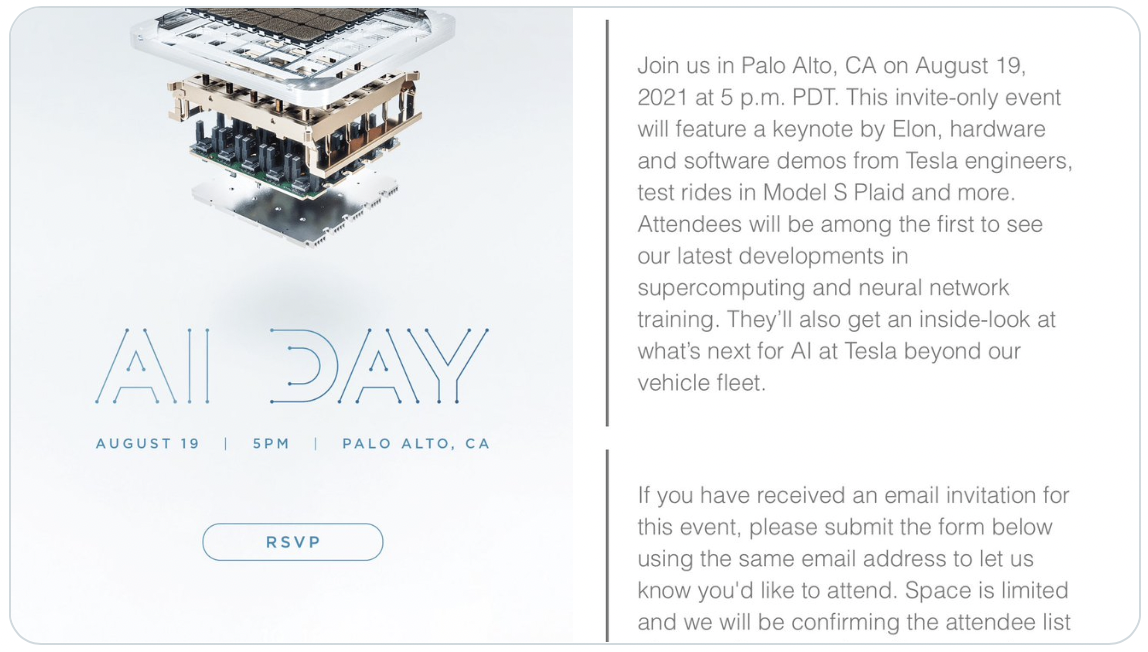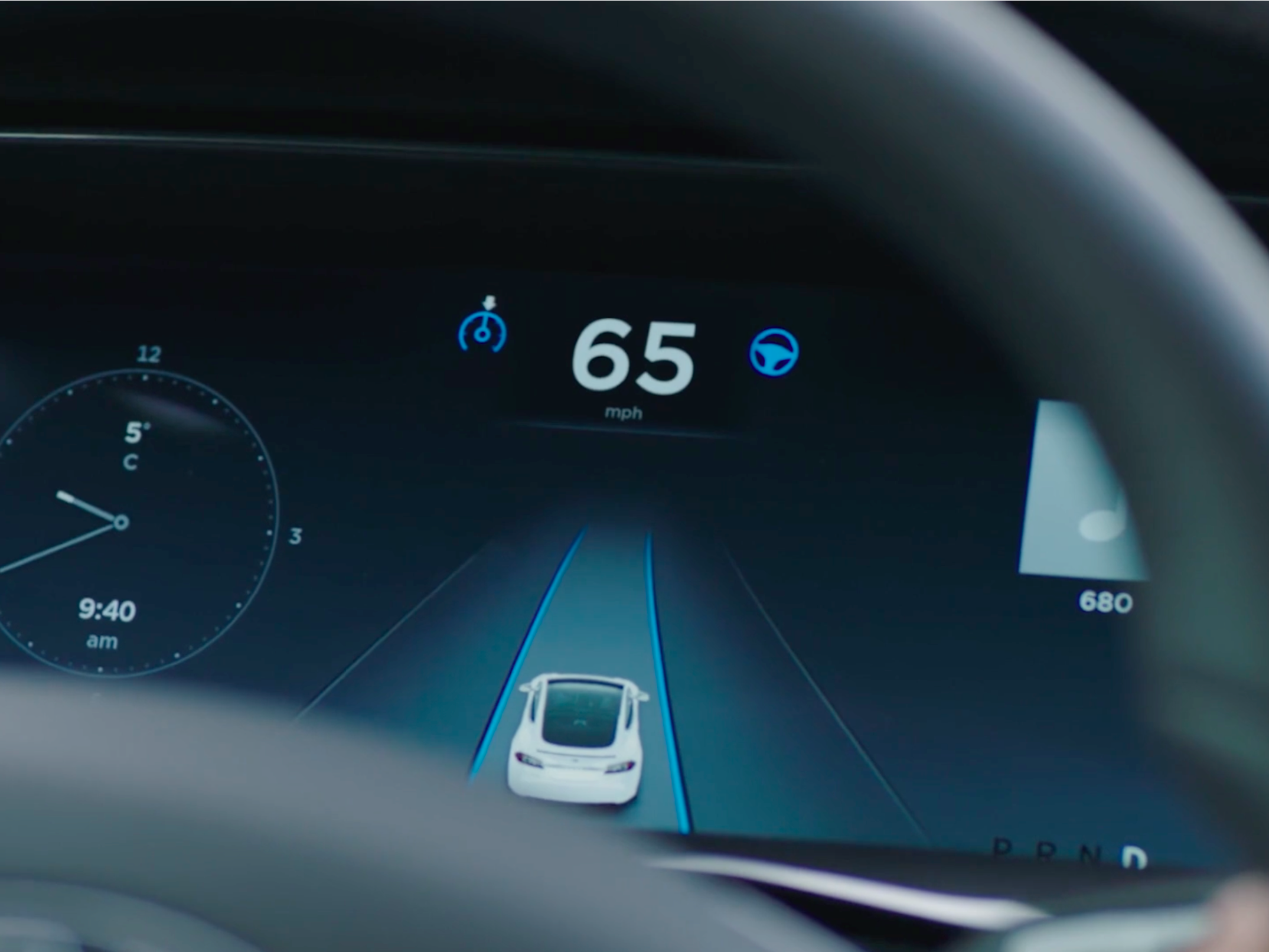Tesla will host its AI Day on August 19. We view the event more like the second edition of Autonomy Day, given autonomy is the principal application of AI within Tesla. A key question for investors will be what the latest timeline is for achieving full autonomy. Despite Elon’s ambitious goal of the end of this year, our best guess is that 2025 will be the first year of public availability of level 4 autonomy.
Autonomy timeline aside, what will likely be missed at AI Day, as was the case with Battery Day 2020 and Autonomy Day 2019, is the substance and long-term implications of the technology. The reason it gets missed is that it comes with a high geek factor, which requires sufficient industry knowledge to judge its validity. Absent that industry knowledge, investors tend to downplay the significance of the roadmap.
While autonomy is the primary focus of AI efforts at Tesla, applications of AI will extend beyond it. The private RSVP invite (shared on Twitter) for AI Day indicates the event will showcase AI use cases at Tesla “beyond our vehicle fleet”:

Utilizing AI beyond autonomy resonates with Musk’s comments during Tesla’s Q1 2021 earnings call, in which he said, “I think long term, people will think of Tesla as much as an AI robotics company as we are a car company or an energy company.” Specifically, we expect Tesla will give updates at AI Day regarding its Dojo Supercomputer. Dojo is still in development and will eventually replace Tesla’s existing supercomputer, which is used to train the neural networks that power the software for Autopilot and FSD. Ultimately, Musk has said Tesla will make Dojo available to other companies that want to use it to train their neural networks.
From a business standpoint, we believe extending AI applications outside of full self-driving aligns with Tesla’s broader strategy of leveraging the software and hardware expertise it has built within automotive to enter new markets, including battery storage, HVAC, insurance, and trucking logistics.
What’s changed since Autonomy Day 2019?
As a reminder, in April 2019 Tesla hosted Autonomy Day. Since that event, there have been two notable developments in Tesla’s autonomy approach:
- Removing radar for Tesla Vision. Beginning in May 2021, Tesla announced that Model 3 and Model Y deliveries in North America will “no longer be equipped with radar. Instead, these will be the first Tesla vehicles to rely on camera vision and neural net processing to deliver Autopilot, Full-Self Driving, and certain active safety features.” Contrary to other automakers, Tesla has never used Lidar in its vehicles, and now, radar will not be used either. Given the autonomy challenge has yet to be solved, time will ultimately tell whether a pure vision or a vision + radar approach is superior. That said, from a data collection standpoint, the fact that Tesla has more than 1m vehicles on the road collecting real-world data to train its software gives the company a clear advantage in this respect.
- FSD subscription: In July, Tesla introduced FSD subscriptions. Offering FSD on subscription shifts the price from $10,000 upfront to $200 per month (or $99 for cars that already have advanced Autopilot), which should play an important role in accelerating FSD adoption. The reason is that Tesla buyers are skeptical of the value of what seems like a pricy option. Increasing FSD adoption is important for further data collection and training, along with improving profitability. By 2031, we believe FSD alone could deliver up to $159B in revenue and $102B in operating profit.
